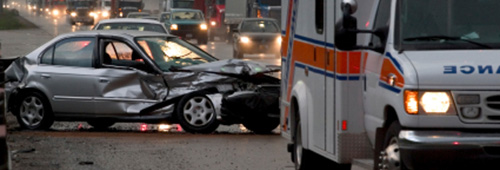
Since the defining regulation for the Bill 198 threshold was passed in October 2003, it has been the subject of a much debate. There have been surprisingly few decisions to provide guidance and new decisions are always welcome.
Only six days into the new year, Madame Justice Milanetti released a new decision that sheds further light on the interpretation of the threshold under Bill 198. It suggests that courts are not interpreting the Bill 198 threshold as a substantial departure from the previous threshold under Bill 59.
Valdez v. Clarke involved a threshold motion brought by a defendant at the end of a three-week jury trial. Mr. Valdez had been involved in three motor vehicle collisions and brought a lawsuit against the defendant driver in the second collision. The jury awarded Mr. Valadez $25,000 in general damages for pain and suffering and loss of enjoyment of life. Because the deductible on general damages is $30,000 under Bill 198, Mr. Valdez would not end up receiving any compensation.
Despite the absence of any financial recovery for Mr. Valdez, Justice Milanetti agreed to hear the defendant’s threshold motion “given the paucity of Bill 198 law on threshold thus far.”
Justice Milanetti noted that it would be easy to simply allow the threshold based on the jury’s decision to award damages. However, she noted that while a judge is entitled to take a jury’s verdict into consideration, she is not bound by it.
Justice Milanetti went on to review the medical evidence and noted that “there is no doubt that at the end of the day Mr. Valadez’s biggest complaint is “pain, pain, pain”.”
Despite the existence of pre-accident medical complaints, Justice Milanetti found that he did not have a pre-existing history of chronic pain. On balance, she found Mr. Valdez to be credible and also found that his treating doctors came across as “the professionals they were.”
Justice Milanetti concluded that Mr. Valdez suffered chronic pain syndrome as a result of the motor vehicle accidents. Before reaching this conclusion, she noted that the jury apparently did not find Mr. Valdez credible or, at least, did not have tremendous sympathy for him.
Though Mr. Valdez managed to return to his primary work, he was unable to return to his additional part-time position and turned down alternate cleaning work as a result of his back pain. Justice Milanetti found that this constituted a substantial interference with his regular or usual employment.
Justice Milanetti noted that she was required to consider evidence about the effect that Mr. Valdez’s injuries had on his usual activities of daily living. She accepted that while Mr. Valdez had managed a return to work, he had done so at the expense of his activities of daily living and enjoyment of life. Mr. Valdez had virtually given up two of his former passions, cooking and photography. Justice Milanetti also accepted that Mr. Valdez had previously been very socially active and after the collisions did virtually nothing other than work. While he was once active in sports with his son Stephen, he was no longer active role in the collision. He also gave up going for walks, dancing, or two outings to places such as Algonquin Park.
Justice Milanetti turned to the language of the defining regulation under Bill 198 and concluded that the new legislation did not make prior case law irrelevant. She felt the definition of “serious” set by the Ontario Court of Appeal in May v. Casola was relevant to Mr. Valdez’s case.
In the result, Justice Milanetti concluded that Mr. Valdez had sustained an interference with both his regular or usual employment and his usual activities of daily living. Consequently, she dismissed the defendant’s threshold motion.
The Valdez decision provides further support to the line of cases that hold that the Bill 198 threshold is not substantially more onerous than the threshold under the previous Bill 59 legislation.





